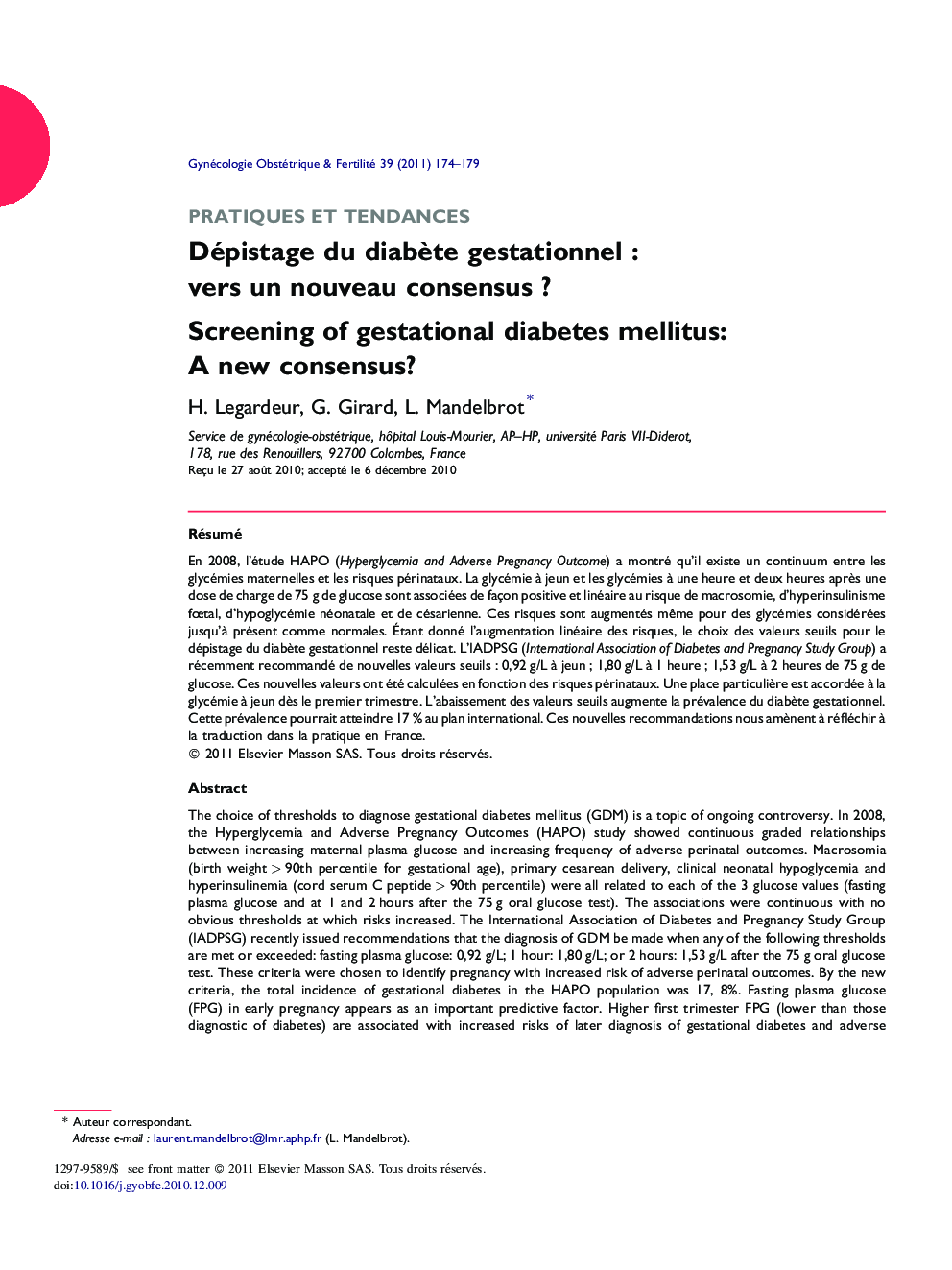| Article ID | Journal | Published Year | Pages | File Type |
|---|---|---|---|---|
| 3950391 | Gynécologie Obstétrique & Fertilité | 2011 | 6 Pages |
Abstract
The choice of thresholds to diagnose gestational diabetes mellitus (GDM) is a topic of ongoing controversy. In 2008, the Hyperglycemia and Adverse Pregnancy Outcomes (HAPO) study showed continuous graded relationships between increasing maternal plasma glucose and increasing frequency of adverse perinatal outcomes. Macrosomia (birth weight > 90th percentile for gestational age), primary cesarean delivery, clinical neonatal hypoglycemia and hyperinsulinemia (cord serum C peptide > 90th percentile) were all related to each of the 3 glucose values (fasting plasma glucose and at 1 and 2 hours after the 75 g oral glucose test). The associations were continuous with no obvious thresholds at which risks increased. The International Association of Diabetes and Pregnancy Study Group (IADPSG) recently issued recommendations that the diagnosis of GDM be made when any of the following thresholds are met or exceeded: fasting plasma glucose: 0,92 g/L; 1 hour: 1,80 g/L; or 2 hours: 1,53 g/L after the 75 g oral glucose test. These criteria were chosen to identify pregnancy with increased risk of adverse perinatal outcomes. By the new criteria, the total incidence of gestational diabetes in the HAPO population was 17, 8%. Fasting plasma glucose (FPG) in early pregnancy appears as an important predictive factor. Higher first trimester FPG (lower than those diagnostic of diabetes) are associated with increased risks of later diagnosis of gestational diabetes and adverse pregnancy outcomes. Whether this new consensus will be adopted by public health bodies and professionals remains to be seen.
Keywords
Related Topics
Health Sciences
Medicine and Dentistry
Obstetrics, Gynecology and Women's Health
Authors
H. Legardeur, G. Girard, L. Mandelbrot,
